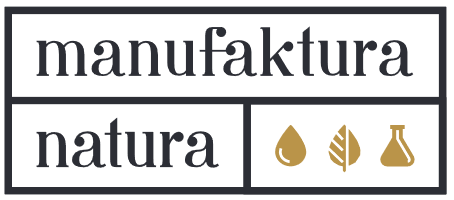Tales of cosmetics ingredients. Fashion for ecology. Part 2.
- today
- label News
- remove_red_eye 3413 views
- comment 0 comments
The cosmetics industry is valued at billions of dollars and its potential is growing steadily. Huge market competition exerts pressure on corporations to adapt to the current requirements of customers. It is, among other things, the growing awareness that we want to use natural cosmetics.
Fashion for ecology means business, and business is money - so it's no wonder that companies find the motivation to fit in with trends. On cosmetics packaging, we can find terms such as 'eco' or '100% natural'. However, are you able to confirm this information? If you read the ingredients of the products, do you know what these substances are?
Much was said about the problem of unfairness in production when the French consumer organization UFC Que Choisir released a list of 185 cosmetics posing a health hazard. There are, among others creams, shampoos and toothpaste. Unfortunately, all substances listed there are legal. In order to mindlessly fall on the mercy of producers, it is enough to spend a few minutes studying the label, finding healthy alternatives, and above all - trusting your intuition and your own common sense.
ARABENS
Parabens are another group of ingredients in cosmetics that do not enjoy a good reputation. They are preservatives that extend the shelf life of products. You will find a particularly large amount of them in moisturizing creams and liquid soaps. At the same time, it is one of the most common allergens and irritants.
We believe that parabens should be avoided like fire. They have a very good ability to penetrate the skin, accumulate in our tissues and - according to some studies - mimic estrogen, the female hormone in the body. Therefore, women should be especially careful about them, as they can lead to hormonal disorders.
FORMALDEHYDE
Formaldehyde is also a preservative used in the production of cosmetics. In the course of trade, we find it in the form of a 37% solution (formalin). In the EU, it is allowed in the production of cosmetics in a concentration from 0.1 to 5%. It seems that it is not enough? What if we tell you that formaldehyde is used to disinfect packaging, pipes and vessels in the food industry? We do not want to spoil the joy of the day with an explicit description of applications - but this is not a product that we would like to put on our skin. In addition, its vapors are extremely irritating, and in contact with the skin it causes a rash and sensitization. Why can you find it in nail polishes, hair cosmetics, self-tanners and bath lotions? We can only guess.
Instead of a self-tanner, we recommend using carrot oil. It literally and figuratively gives the skin a healthy shade of tan. Nourish your hair with coconut oil masks, and natural oils will replace the serum for disciplining the ends.
Preservatives contained in cosmetics prevent the development of mold and bacteria in them, causing loss of quality, change of smell and color. However, let's not forget that these substances themselves also threaten our health. Increasing public campaigns against preservatives have forced laboratories to search for natural alternatives. Pay attention to whether our cosmetics preservatives have been approved by Ecocert and other independent certification bodies.
Essential oils are excellent antibacterial agents, which you can use to enrich natural cosmetics, extending their durability. Let's also not forget that any product, stored in accordance with the recommendations, will not change its properties faster than before the expiry date. The so-called "denko action" has gained popularity on the Internet. According to its rules, we do not open a new cosmetic packaging until the previous copy is completely used up.
PEG and PPG
In the next episode of creepy-cosmetic-stories you will meet the innocent compounds labeled PEG and PPG. They are not Mother Nature's children, but a laboratory. Their addition in industrial production gives the cosmetics the desired consistency, but also the ability to weaken the lipid protection of the epidermis and damage the structure of cells. To make matters worse, their production uses poison, ethylene oxide. They are widely used in the preparation of toothpastes, mouthwashes and stick deodorants. It is an extremely cheap raw material that destroys health and the environment with regular contact.
How to replace a harmful antiperspirant? We can reveal that bergamot oil has a special ability to block the growth of bacteria that cause the unpleasant smell of sweat.
PARAFFIN
We decided that another example of a harmful ingredient can be called the sister of PEG and PPG, because it is also a product derived from the distillation of crude oil. Paraffin, because we are talking about it, as a cheap and easy-to-obtain ingredient, is found in face creams and make-up bases. Effectively evens out the skin tone. Something for something - at the same time it creates a coating on the skin, difficult to remove, impermeable to water and gases. Paraffin itself does not cause allergies, but leads to us

Comments (0)